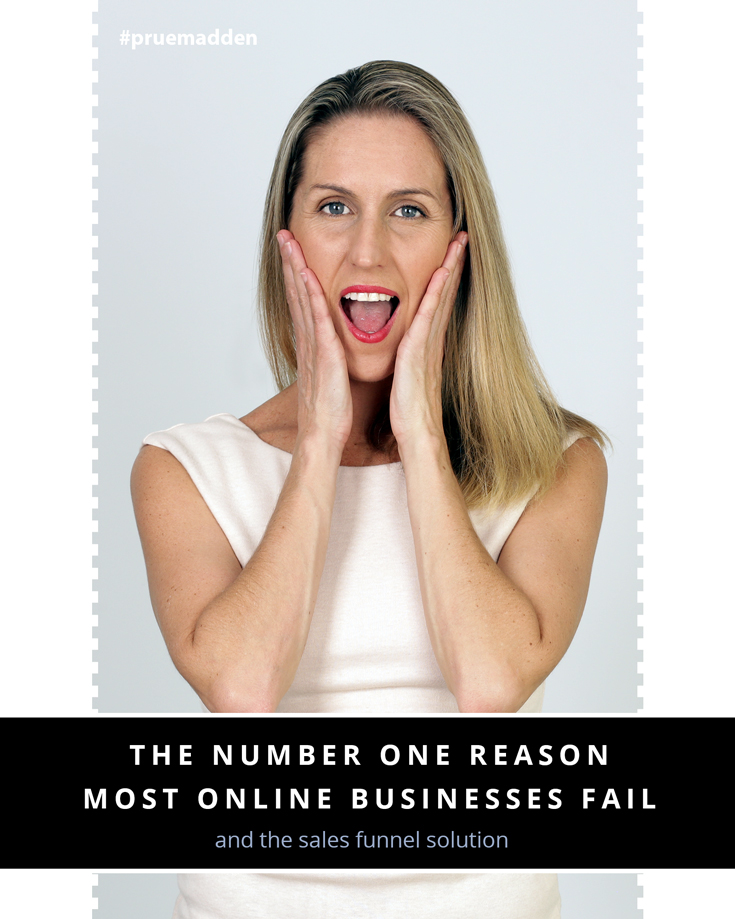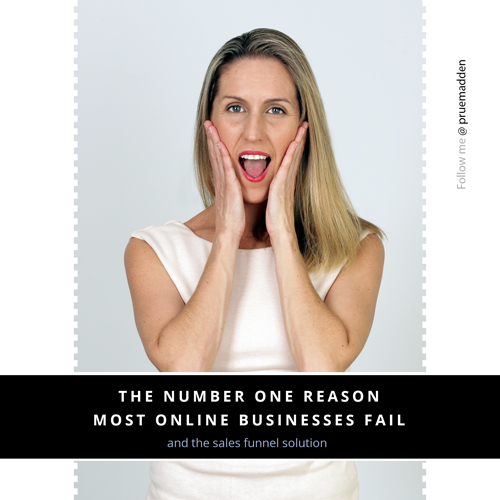Let’s Face it. We all know the figures. No matter what country you are in, the numbers are all scarily similar. Where I’m from, more than 60 percent of businesses will fail within the first 3 years. That’s confronting, right?
In the last 10 years I’ve been involved in the digital marketing space I’ve seen businesses come and business go. I can’t even count the number of friends of mine who have started online businesses on folded in the first year, either through lack of direction, lack of skill, or because they have run out of money. Often it’s just a bad business idea from the get-go too.
But the common denominator in most of these cases is lack of (good) sales systems. You see most people who start on online business don’t have a solid grasp of the concepts of how to acquire customers, how to trigger them to purchase products and how to create a steady flow of income into their business.
In this three part series, we’ll explore how to craft a sales an online marketing machine using a concept called a “sales funnel”. We’ll dig deep into an analysis of all the “moving parts” of a sales funnel, so that you understand what it takes to attract prospects, entice them to buy your products, and keep on coming back again and again to buy more. Along the way I will demonstrate why you must continuously test and analyze your funnel process to ensure long term success.
In this, the first part of of the series, I’ll introduce the Sales Funnel, which is often also referred to as the Sales Conversion Funnel. If you are not sure exactly what a sales funnel is, and why the heck you need one, I’ll paint a “real life” picture for you in just a moment.
What is a Sales Funnel?
Sales funnels are the cornerstone of successful businesses. Online or offline, this holds true. Sales funnels are strategic backbone of many of the top online marketers businesses. So what is a sales funnel, and how can this strategic system propel the successful marketers out of the “pack”, and into the made-it-big-stratosphere above?
The sales funnel begins by capturing the attention of prospects. Some prospects are convinced to become buyers, who purchase an entry level product, demonstrating that they have a need for what is on offer and are willing to invest money to solve their problem. The sales funnel continues to nurture the best customers, filtering out mismatches and refining the specific target customer, offering them more specialized products and services, often at higher prices.
By the end of the process the funnel has identified the ultra-responsive customers who purchase everything on offer and experience the most value and satisfaction from every purchase made. It is from these ultra-responsive consumers that the majority of profits are made.
The Customer Experience
In almost every corner of the internet these days, you will come across offers in the form of “Free Downloads”. For example, if you are on a Personal Development website, you’ll probably come across some type of offer such as “Reach Your Goals in 4 weeks”, which may claim to help you reach any goal within a month.
When you click on the offer, you will likely be taken to a page on which there is a brief summary of the benefits of the product and a form which requires you to enter you name and email address, in exchange for downloading the free “Reach your Goals in 4 weeks” pdf.
This squeeze page is the entry point to your email marketing list. The squeeze page is an integral feature in online sales funnels. If you’ve ever downloaded a “freebie” from a website online, you’ve likely landed yourself in the top of a sales funnel. Following the download, you likely found yourself on an email list on which, over time, you received other offers and free content from the business.
These emails can be incredibly compelling and emotive – that’s what a good marketer does. After achieving the first aim of filtering those visitors that are interested in a particular topic from those who are not (this was achieved when you grabbed a free copy of the download, in exchange for your email address), the next step is to guide you through subsequent stages of the funnel, further filtering “ideal” target customers from the less ideal ones. The ideal customers are attracted to the emotive customer testimonials, the cleverly crafted copy and the persuasive techniques to push your “hot buttons”. The entire sequences is carefully crafted to lead the ideal customers to find a solution to the problem that was presented at the very beginning of the sales funnel.
Following the free offer, which you believed would give you everything you needed to solve your problem, you are then educated and wooed into buying a low-ticket item that is the “next step” to solving that problem that you originally downloaded the first freebie to solve. The freebie download gave great value and you continued to read the subsequent emails sent to you. Over time you are presented with engaging, valuable content, and another offer something that will help you even more.
In the case of the “Achieving your goals in a month” example, this could be an “email coaching series” which coaches you through the steps of setting and achieving your goals, delivered weekly over the month, for just $37.
Again, the “email coaching series” was packed with high quality, actionable content, and you continued to read the email newsletters sent to you over the following days / weeks – which are on a new email sequence, one that’s been specifically created by the business, for people who have purchased the email coaching series.
In this email newsletter series you read stories from other people, just like you, who had watched the video series and needed more help with setting and achieving their goals.
You click on a link in one of these emails and it takes you to a web page where the business is offering an online course for $87, which will help you achieve your goals AND what’s more 2x surpass them and set bigger, life-changing goals.
Following the video course, there are other offers such as web summits, live seminars personal coaching calls over Skype or over the phone.
The Sales Funnel Explained
As you can imagine, it’s far easier to sell a high ticket item to someone who has already experienced the exceptional quality of content and offers which are free, or are at a low price compared to the perceived value that you deliver. During this funnel “upsell” process you are able to connect with the customer, to demonstrate your authority and reassure them of the value that you consistently deliver.
So this, is what we refer to as a “Sales Funnel”. And as you can see, Sales Funnels, when paired with quality content, products and/or services, can be a conduit for hundreds, thousands, or even millions of customers to develop a long term, close, mutually beneficial relationship with you and your business.
Succeeding in a Competitive Online Environment
In order to compete, and have longevity in this progressively competitive online marketplace, companies must understand long term customer value, the customer facing side of the funnel, and the backend end of the sales funnel – the side the customers do not see. Having a solid understanding of conversion point metrics throughout the sale funnels is the other key component for success.
Sales Funnel Drop Outs
Not all people who exchange their email address for a “freebie” or “lead magnet” will go on to purchase high ticket items from you. In fact a very small percentage will – perhaps only two percent will buy your $2000 signature course.
Throughout the sales funnel, with each offering, and each contact point with your prospects and customers, your filtering system continues to channel those suitable through the funnel, while segmenting out those who are not suitable.
As the customers are moved through, the number of people that progress to the next stage decreases, while the unit price of the products increases.
So let’s take a look at the two sides of the marketing funnel: The customer-facing side, which I call the front end, and the rear of the funnel, which I refer to as the back-end end.
Front End Marketing
Front end marketing is any offer that brings in a new customer. The funnel front end is continually evolving. After you have created your funnel, once it’s live, you will continues to experiment, test and tweak. You can get highly creative with the funnel front end – there is an infinite number of ways you can attract potential customers to your offer.
Social media, Facebook, Pinterest, YouTube and Search listing Ads, blogging, pod-casting, Facebook groups, and forum posting are just a few sources of traffic that are popular today. As time goes by different platforms and tools are emerging, and it’s important for marketers to keep an eye on the landscape to see which new traffic source or tool may be ideal for attracting their target market.
At the front end of your sales funnel, your goal is to attract people who may be interested in buying your end products. You’ll be providing information that will educate the potential buyers about your product. The information you provide will help the person to decide whether this offering is right for them. You are providing the person the option to opt in to the sales funnel. Once they opt in, they move from visitor to prospect.
Nowadays, with the advent of Social Media and the formation of social communities and “tribes” online, it’s not necessary for someone to subscribe to you email list to be considered a “prospect”. Just by giving you their attention and by establishing a relationship, whether that be as a YouTube subscriber, an Instagram follower, a Facebook group member, or they have opted in to your email list, they have entered the sales funnel.
Whatever the nature of their opt-in, and regardless of the platform, they relationship has accelerated to a point where you have their permission and they have the intent to continue to give you their attention. The funnel front end is just that. It’s the entire audience-facing part of the funnel that aims to attract and engage your potential customers.
Front end offers are offers that bring in new customers. The type of offer is irrelevant. Some examples are free plus shipping offer, a low priced offer, known as a trip wire offer, a deeply discounted offer etc. You may also start your funnel with a free “lead magnet”, which is technically not a “front end” offer as it does not convert a lead to a customer. A trip wire, or a flash sale are the technical front end products in your funnel.
Wrapping Up
Stay tuned for part two of this series, where we’ll talk about another important aspect of how create an online sales machine: How to Set Up a Sales Funnel. Jump on over there now and get ready to create your sales machine.


